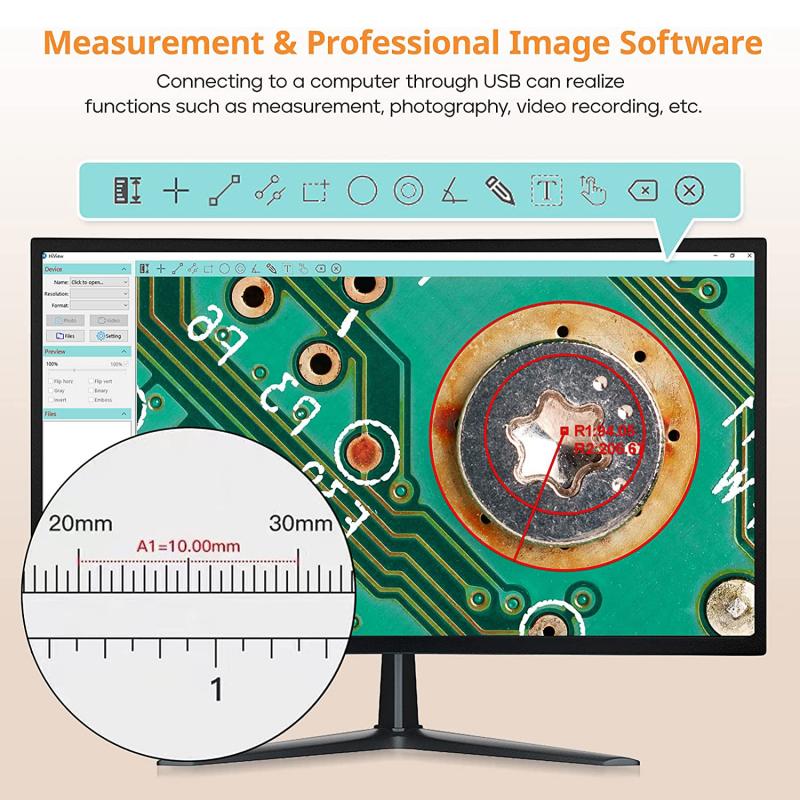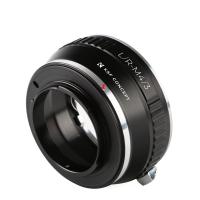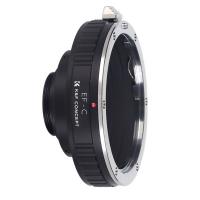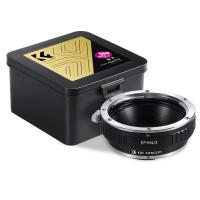What Was The Name Of The First Microscope ?
The first microscope was called the "simple microscope."
1、 Simple microscope
The first microscope, known as the "simple microscope," was invented in the late 16th century by Dutch spectacle maker Zacharias Janssen. This early microscope consisted of a single convex lens mounted on a metal plate, which could magnify objects up to 10 times their original size. It was a significant breakthrough in the field of optics and laid the foundation for the development of more advanced microscopes.
However, it is important to note that the term "microscope" was not used until the 1620s when another Dutch scientist, Cornelis Drebbel, invented a compound microscope. This microscope featured two convex lenses, one for magnification and the other for focusing, and was capable of achieving higher magnification levels than the simple microscope.
Since then, microscopes have undergone numerous advancements and improvements. The compound microscope, with its ability to magnify objects at higher resolutions, became the standard tool for scientific research. Over the years, various types of microscopes have been developed, including electron microscopes, fluorescence microscopes, and scanning probe microscopes, each with its own unique capabilities and applications.
Today, the latest point of view in microscopy is the development of super-resolution microscopy techniques. These techniques, such as stimulated emission depletion (STED) microscopy and structured illumination microscopy (SIM), allow scientists to surpass the diffraction limit of light and achieve resolutions at the nanoscale level. This breakthrough has revolutionized the field of microscopy, enabling researchers to observe and study biological structures and processes with unprecedented detail.
In conclusion, while the first microscope was known as the "simple microscope," it was the compound microscope that truly revolutionized the field of microscopy. Since then, microscopes have continued to evolve, with the latest advancements in super-resolution microscopy pushing the boundaries of what we can observe and understand at the microscopic level.

2、 Compound microscope
The name of the first microscope is often attributed to Zacharias Janssen, a Dutch spectacle maker, who is believed to have invented the compound microscope around the late 16th century. However, the exact details of the invention are unclear, and there are other claims to the first microscope as well.
The compound microscope consists of two or more lenses that work together to magnify the image of a specimen. It revolutionized the field of microscopy by allowing scientists to observe objects at a much higher magnification than was previously possible. This breakthrough opened up new avenues of scientific exploration and greatly advanced our understanding of the microscopic world.
Since its invention, the compound microscope has undergone significant advancements and improvements. Modern compound microscopes are equipped with high-quality lenses, adjustable magnification levels, and advanced lighting systems. They also often include additional features such as digital imaging capabilities, allowing for the capture and analysis of microscopic images.
In recent years, there have been further advancements in microscopy technology, such as the development of electron microscopes and confocal microscopes. These instruments have pushed the boundaries of resolution and allowed scientists to observe even smaller structures with greater detail.
Overall, while the exact name of the first microscope may be uncertain, the invention of the compound microscope marked a significant milestone in the history of science. It laid the foundation for further advancements in microscopy and continues to be an essential tool in various scientific disciplines today.

3、 Antoni van Leeuwenhoek's microscope
The name of the first microscope is often attributed to Antoni van Leeuwenhoek, a Dutch scientist who is considered the father of microbiology. In the late 17th century, Leeuwenhoek developed a simple microscope that allowed him to observe and document microscopic organisms for the first time in history.
Leeuwenhoek's microscope was a single-lens device, consisting of a small metal plate with a tiny hole in the center. The lens, which he crafted himself, was mounted on a screw mechanism that allowed for precise focusing. By placing a specimen on a pin and positioning it close to the lens, Leeuwenhoek was able to magnify the object and observe its intricate details.
Although Leeuwenhoek's microscope lacked the sophistication and magnification power of modern microscopes, it was a groundbreaking invention that revolutionized the field of microscopy. With his microscope, Leeuwenhoek made numerous important discoveries, including the existence of bacteria, protozoa, and sperm cells. His meticulous observations and accurate drawings of these microscopic organisms laid the foundation for the field of microbiology.
It is worth noting that the term "microscope" was not used during Leeuwenhoek's time. He referred to his invention as a "simple microscope" or a "magnifying glass." The term "microscope" was coined later, in the 18th century, to describe similar devices that were being developed by other scientists.
In conclusion, Antoni van Leeuwenhoek's microscope was the first of its kind, allowing for the observation of microscopic organisms. While it may not have been as advanced as modern microscopes, it was a groundbreaking invention that paved the way for the field of microbiology.

4、 Electron microscope
The first microscope, known as the "optical microscope," was invented in the late 16th century. It used visible light to magnify objects and revolutionized our understanding of the microscopic world. However, it had its limitations, as it could only magnify objects up to a certain extent due to the wavelength of visible light.
Fast forward to the 20th century, and a groundbreaking invention emerged - the electron microscope. The electron microscope was a significant advancement in microscopy technology as it utilized a beam of electrons instead of visible light to magnify objects. This change in the source of illumination allowed for much higher magnification and resolution, enabling scientists to observe structures at the nanoscale level.
The first electron microscope was developed in 1931 by Ernst Ruska, a German physicist, and his student Max Knoll. This invention marked a turning point in microscopy, as it opened up a whole new world of exploration and discovery. Electron microscopes have since become indispensable tools in various scientific fields, including biology, materials science, and nanotechnology.
In recent years, there have been further advancements in electron microscopy. For instance, the development of transmission electron microscopes (TEM) and scanning electron microscopes (SEM) has allowed for even more detailed imaging and analysis. Additionally, the introduction of aberration-corrected electron microscopy has significantly improved the resolution and clarity of images.
Overall, the electron microscope has played a crucial role in expanding our knowledge of the microscopic world. Its ability to reveal intricate details at the atomic and molecular level has paved the way for numerous scientific breakthroughs and continues to push the boundaries of our understanding.































There are no comments for this blog.